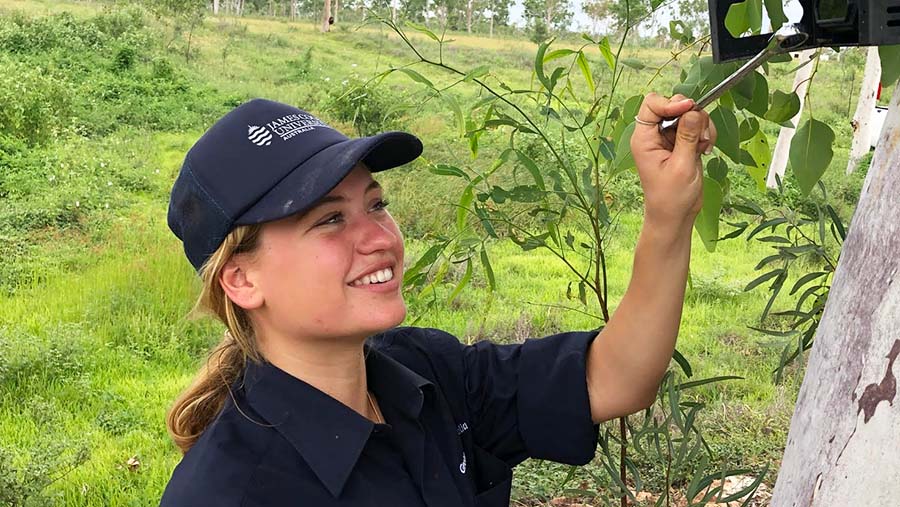Climatic extremes have led to a changing perspective within the ag sector. Regenerative practices, such as reintroducing native perennial grasslands, create more fertile, biodiverse and productive farmlands compared to machinery-heavy and chemically reliant systems. During this new era of best-practice agriculture, farmers are recognising the value of restoring native grasslands and pastures, discovering the many benefits they provide, including:
1. Landscape and livestock health
Continuous grazing through set stocking often leads to poor soil quality and erosion, as pastures have inadequate time to recover from grazing pressure. Degraded farmland also provides ideal conditions for weeds to thrive and dominate. (Undersand et al., 2002). On the other hand, moving livestock between paddocks and allowing adequate rest for pastures (otherwise known as rotational/time-controlled/cell grazing) encourages the rejuvenation of native grasses, which are highly drought-tolerant, reduce soil erosion, improve water infiltration and rarely require the use of fertilisers (Birch et al., 2023). Native perennial grasses are also a great source of protein, with some species providing more than double the amount available from exotic species (Benefit of native pasture, n.d.).
Native perennial grasses are also a great source of protein, with some species providing more than double the amount available from exotic species.
Native pastures require time between grazing periods to release and ensure seed recruitment. Rotational grazing allows native grasses time to regenerate and can even create windows for long-dormant seeds to activate. Graziers who have divided their paddocks into smaller cells are often happily surprised to see species such as Mitchell Grass suddenly reemerge after decades-long absences. When implementing rotational grazing practices, species observation and the monitoring of grazing pressure are crucial to ensuring pasture health. Australian government resources recommend resting native pastures during spring as this allows time for rejuvenation.
Australia is home to roughly 1,000 species of perennial grasses, so it is important to identify which species are native to your paddocks first.
Australia is home to roughly 1,000 species of perennial grasses, so it is important to identify which species are native to your paddocks first (native pasture management, 2011). Two categories of native grasses in Australia are differentiated based on their photosynthetic pathways: C3 (grows in winter) and C4 (grows in summer) (Benefit of native pasture, n.d.). Collaborating with local council and community members may assist you in identifying grasses native to your land. There are also many resources online to help guide you through the reintroduction process.
2. Carbon sequestration
Regenerative farming practices primarily focus on minimal disruption and maximum restoration. Reducing carbon emissions is at the forefront of best-practice farming, and native perennial grasses are particularly efficient at sequestering carbon in soils (Indigenous native flour, n.d.). As native grasses thrive in non-arable landscapes, they are a practical choice to grow in regions that prove difficult for exotic species (which includes most of the Australian landscape). Planting native grasses is an excellent method of regenerative farming as it increases wildlife biodiversity, improves soil fertility and supports carbon-offset projects. Through a 22-year study focusing on native perennial grass carbon storage, Conant et al.'s results showed a 200% increase in carbon storage (Yang et al., 2019). This huge increase in storage came once the second generation of grasses had grown. Changing farming practices is often a game of patience as some benefits only become obvious after a few seasons. It may be difficult to see the immediate effects of planting native grasses but their long-term impacts such as carbon storage and natural capital value are highly valuable.
3. Improving soil salinity

Native perennial grasses have adapted to tolerate Australia's dry landscape, seasonal fires and extended periods of drought (Grassed up - introduction, n.d.). Because of this, they are highly accustomed to low-fertility soils compared to their exotic replacements. High salinity reduces a plant's ability to absorb essential nutrients, impacting crop growth (Salinity and water quality (n.d.). Because exotic species often have shallow root systems, excess water drains into the water table and allows water-soluble salts to rise and crystallise on topsoil, increasing soil salinity and stunting plant growth. Native perennial grasses, however, have long root systems preventing this process from occurring (Salinity and water quality (n.d.).
4. Nutritional value
Not only are they proven as high-quality feedstock, but the grains of native grasses are also highly nutritious for human consumption. Traditional Custodians of Australia developed their native grain belt thousands of years ago, passing on their knowledge and harvest methods from generation to generation (Indigenous native flour, n.d.). Jacob Birch, a member of the Gamilaraay people of north-west New South Wales and south-west Queensland, conducted a study on seven grasslands native to his country. His study explored the nutritional value of the grains produced by these grasses using brown rice (a staple grain used globally) for comparison. Birch et al., found that all seven grains contain higher levels of protein and essential elements including calcium, iron, zinc, magnesium and more. The grains also possess higher concentrations of polyunsaturated fats and phenolic acids (which reduce cholesterol and chances of heart disease) and have lower carbohydrate concentrations (Birch et al., 2023).
Traditional Custodians of Australia developed their native grain belt thousands of years ago, passing on their knowledge and harvest methods from generation to generation.
Birch et al.'s study is the most comprehensive and innovative study of the nutritional benefits of Australian native grasses to date. There is exciting potential for exploring similar research and commercially promoting native grains for human consumption. Australia's First Nations people are custodians of a deep well of agricultural knowledge; acknowledging this is essential. The commercial production of native grains is an opportunity to connect First Nations and New Nations Australians while also improving degraded lands, carbon sequestration and food security.
Re-introducing native perennial grasses into grazing pastures reduces the presence of pest species, strengthens soil structure and increases wildlife biodiversity, among many other benefits. For farmers wishing to re-introduce native grasses into their pastures, now is an incredible opportunity to seek advice and learn first-hand from community elders, local land care groups and advisors. Numerous online resources also offer valuable information for implementing native perennial species into your own farming or grazing system.



